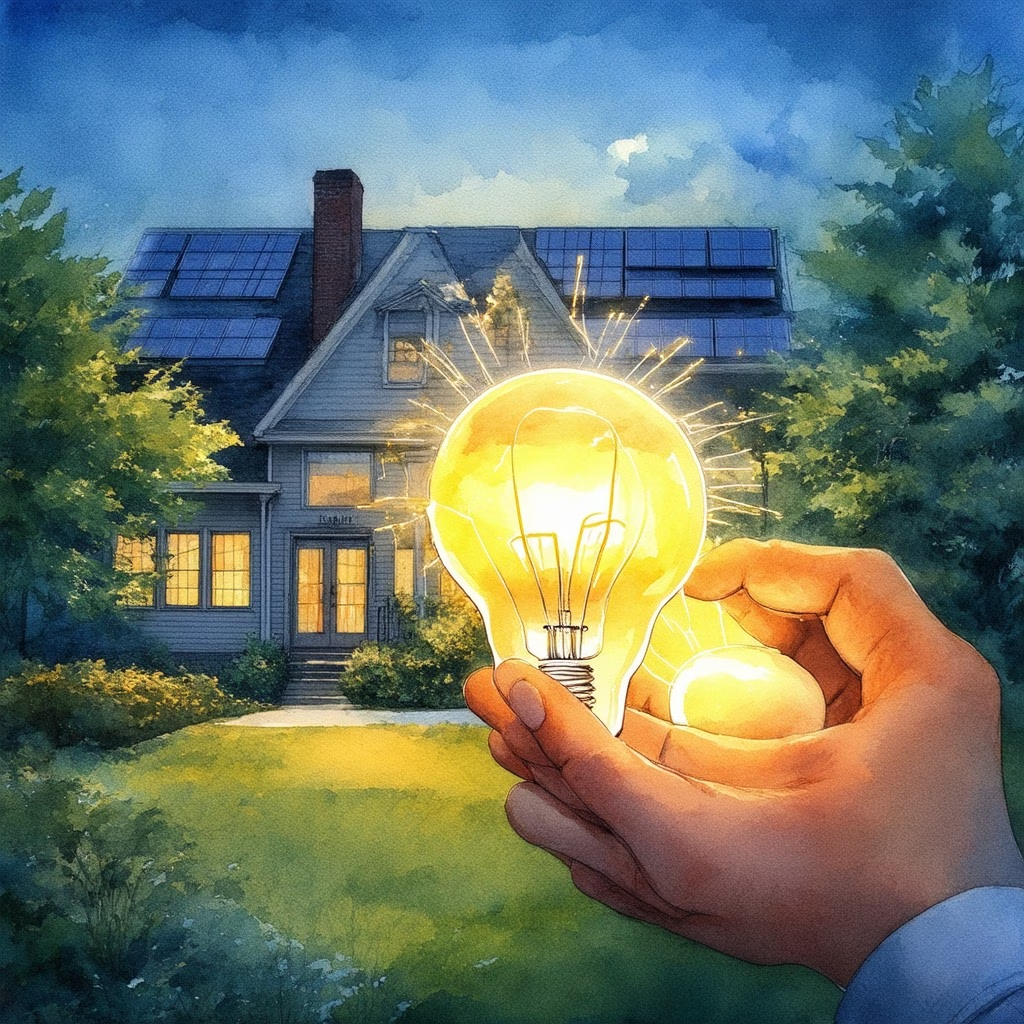Key Takeaways
- Understand eligibility criteria for government energy assistance programs to maximize your benefits and reduce energy bills.
- Explore the Low Income Home Energy Assistance Program (LIHEAP) for financial support based on income limits specific to your state.
- Utilize the Washington State Energy Assistance Program for additional resources, including utility bill assistance and energy efficiency improvements.
- Apply online for energy assistance programs to streamline the process and ensure quicker access to financial aid.
- Gather necessary documentation, such as proof of income and utility bills, to enhance your chances of successful application approval.
In today’s challenging economic landscape, understanding the government energy assistance program can be a game-changer for many households struggling with rising energy bills. This comprehensive guide will navigate you through the various facets of these programs, including eligibility criteria, application processes, and the benefits they offer. We will explore critical topics such as the maximum income limits for energy assistance, the specifics of the Washington State Energy Assistance Program, and how to apply for the Low Income Home Energy Assistance Program (LIHEAP) in Montana. Additionally, we’ll delve into the importance of weatherization assistance programs and the available window replacement programs that can enhance energy efficiency in your home. By the end of this article, you will be equipped with the knowledge to maximize your benefits from these essential government energy programs, ensuring that you can manage your energy costs effectively while taking advantage of available resources.
What is the maximum income for energy assistance?
Understanding Income Limits for Energy Assistance Programs
The Low Income Home Energy Assistance Program (LIHEAP) provides financial assistance to eligible low-income households to help with their energy costs. The maximum income limits for LIHEAP vary by state and household size, reflecting the federal poverty guidelines. For the 2025 LIHEAP income eligibility, the following are the general income thresholds based on household size:
- 1-Person Household: Up to $20,385
- 2-Person Household: Up to $27,465
- 3-Person Household: Up to $34,545
- 4-Person Household: Up to $41,625
- 5-Person Household: Up to $48,705
- 6-Person Household: Up to $55,785
- 7-Person Household: Up to $62,865
- 8-Person Household: Up to $69,945
- For each additional person: Add $7,080
These figures are based on the 2025 federal poverty guidelines and may be adjusted by individual states. It is essential for applicants to check with their local LIHEAP office for specific income limits and eligibility requirements, as states may have different criteria and additional benefits. For more detailed information, you can visit the official LIHEAP website or consult resources like the U.S. Department of Energy.
How Income Affects Eligibility for Government Energy Programs
Income plays a crucial role in determining eligibility for various government energy programs. Programs like LIHEAP and other state-specific energy assistance initiatives assess household income against established thresholds to ensure that aid is directed to those most in need. Typically, these programs utilize the federal poverty guidelines as a benchmark, which can vary significantly based on household size and state regulations.
In addition to LIHEAP, there are other government energy programs that may offer assistance based on income, such as the National Grid energy assistance programs and various government help on energy bills. Understanding these income limits is essential for applicants to maximize their chances of receiving the necessary support to manage their energy bills effectively.

What is the Washington State Energy Assistance Program?
The Washington State Energy Assistance Program (WSEAP) is designed to support residents in managing their energy costs and transitioning to more sustainable energy solutions. This program is particularly beneficial for low-income households, providing financial assistance to help pay utility bills and improve energy efficiency.
Overview of Washington State Energy Assistance Programs
Key features of the Washington State Energy Assistance Program include:
- Financial Assistance: WSEAP offers monetary support to eligible individuals and families, specifically those earning up to 80% of the Area Median Income (AMI). This assistance can cover various utility expenses, including electricity, gas, and heating oil.
- Energy Efficiency Improvements: The program encourages participants to adopt low-to-no carbon heating and cooling options. This not only helps reduce energy costs but also contributes to environmental sustainability by promoting cleaner energy sources.
- Eligibility Requirements: To qualify for WSEAP, applicants must meet specific income guidelines and demonstrate a need for assistance. The program prioritizes households with children, elderly members, or individuals with disabilities.
- Application Process: Residents can apply for assistance through local community action agencies or online platforms. It is essential to provide documentation of income and utility bills to ensure eligibility.
- Additional Resources: The program may also connect participants with other resources, such as weatherization services and energy conservation programs, further enhancing their energy efficiency and reducing long-term costs.
For more detailed information and to apply, residents can visit the Washington State Department of Commerce website or contact local community action agencies. The program aligns with broader state initiatives aimed at reducing energy poverty and promoting sustainable energy practices across Washington.
Benefits of the Washington State Energy Assistance Program
The Washington State Energy Assistance Program offers numerous benefits that extend beyond immediate financial relief. Here are some key advantages:
- Reduced Energy Bills: By providing financial assistance, the program helps alleviate the burden of high energy bills, allowing families to allocate funds to other essential needs.
- Improved Energy Efficiency: Participants are encouraged to engage in energy efficiency measures, such as the weatherization assistance program, which can lead to long-term savings on energy costs.
- Access to Additional Resources: The program connects participants with various resources, including the federal window replacement program and other energy programs that can further enhance home efficiency.
- Support for Vulnerable Populations: The program prioritizes assistance for households with children, elderly members, or individuals with disabilities, ensuring that the most vulnerable populations receive the help they need.
By participating in the Washington State Energy Assistance Program, residents not only gain immediate financial support but also contribute to a more sustainable future through energy-efficient practices.
What are the government programs for energy?
The U.S. government offers several programs aimed at promoting energy efficiency and providing financial assistance for energy costs. These government energy programs are designed to support low-income households and enhance energy efficiency across the nation. Here are some key programs available:
Exploring Various Government Energy Programs Available
- Low Income Home Energy Assistance Program (LIHEAP): Administered by the U.S. Department of Health and Human Services, LIHEAP provides financial assistance to eligible low-income households for home heating and cooling costs, bill payment assistance, and emergency energy crisis support. This program helps millions of families manage their energy expenses each year.
- Weatherization Assistance Program (WAP): Managed by the U.S. Department of Energy, WAP aims to increase the energy efficiency of homes owned or occupied by low-income individuals. This program provides funding for energy audits and improvements, such as insulation and heating system upgrades, which can significantly reduce energy bills and enhance comfort.
- Energy Efficiency and Conservation Block Grant Program (EECBG): This program provides grants to local and state governments to develop and implement energy efficiency and conservation projects. The EECBG program encourages innovative strategies to reduce energy consumption and promote renewable energy sources.
- Renewable Energy Programs: The Department of Energy supports various initiatives to promote renewable energy technologies, including solar, wind, and geothermal energy. These programs often include grants, tax incentives, and technical assistance to help individuals and businesses adopt clean energy solutions.
- Federal Tax Credits for Energy Efficiency: Homeowners can take advantage of federal tax credits for energy-efficient home improvements, such as installing solar panels or energy-efficient windows. The IRS provides guidelines on eligible improvements and the associated tax benefits.
Key Features of Federal and State Energy Assistance Programs
Federal and state energy assistance programs share several key features that enhance their effectiveness:
- Eligibility Criteria: Most programs have specific eligibility requirements based on income levels, household size, and energy needs. Understanding these criteria is crucial for applicants seeking assistance.
- Application Process: Many programs allow individuals to apply for energy assistance online, streamlining the process and making it more accessible. For example, you can apply for energy assistance online through various state and federal portals.
- Comprehensive Support: Programs often provide a range of services, from direct financial aid to energy efficiency improvements, ensuring that households receive the support they need to manage their energy bills effectively.
How to apply for LIHEAP in Montana?
Applying for the Low-Income Home Energy Assistance Program (LIHEAP) in Montana is a straightforward process designed to help eligible households manage their energy bills. Here’s a step-by-step guide to ensure you navigate the application process smoothly.
Step-by-Step Guide to the LIHEAP Application Process in Montana
- Online Application: Visit the official Montana state application portal at apply.mt.gov. This user-friendly platform allows you to complete your application electronically, ensuring a streamlined process.
- Phone Application: If you prefer to apply via mail, you can call the Montana LIHEAP office at (406) 728-3710. Request a paper application to be sent to your address.
- Eligibility Requirements: Ensure you meet the eligibility criteria, which typically include income limits based on household size and other factors. For the most current eligibility guidelines, refer to the Montana Department of Public Health and Human Services website.
- Documentation: Prepare necessary documentation, such as proof of income, identification, and utility bills. Having these documents ready will expedite your application process.
- Local Assistance: For additional help, consider contacting local community action agencies or organizations that assist with LIHEAP applications. They can provide guidance and support throughout the process.
Important Documents Needed for LIHEAP Application in Montana
When applying for LIHEAP in Montana, it’s crucial to gather the necessary documentation to support your application. Here are the key documents you will need:
- Proof of Income: This may include pay stubs, tax returns, or Social Security statements.
- Identification: A government-issued ID or driver’s license to verify your identity.
- Utility Bills: Recent energy bills to demonstrate your current energy costs.
- Proof of Residency: Documentation that confirms your residence, such as a lease agreement or mortgage statement.
Having these documents ready will not only help you meet the eligibility requirements but also speed up the processing of your application. For more detailed information, visit the U.S. Department of Health and Human Services LIHEAP page.

Does Social Security Count as Income for LIHEAP?
Yes, Social Security benefits are considered countable income for the Low-Income Home Energy Assistance Program (LIHEAP). LIHEAP is designed to assist low-income households in managing their energy costs, and understanding income qualifications is crucial for eligibility.
Understanding Income Eligibility for LIHEAP
Countable income, also referred to as base income, includes various sources such as:
- Wages and salaries
- Tips
- Social Security benefits (both retirement and disability)
- Supplemental Security Income (SSI)
- Unemployment benefits
Each state has its own specific income guidelines for LIHEAP eligibility, which can vary based on household size and income level. It is essential to consult your state’s LIHEAP office for the most accurate and up-to-date information regarding income limits and eligibility requirements.
How Social Security Benefits Impact LIHEAP Eligibility
Some states may have different rules regarding what constitutes countable income. For example, certain deductions may apply, which can affect your total countable income. Therefore, it is advisable to check with local resources or the official LIHEAP website for detailed guidance. Understanding these nuances can help you maximize your benefits from energy assistance programs and ensure you receive the support you need to manage your energy bills effectively.
Does LIHEAP Verify Income?
Yes, LIHEAP (Low Income Home Energy Assistance Program) does verify income as part of the application process to determine eligibility for assistance. The verification process varies by state, but generally includes the following methods:
- Social Security Income Verification: For applicants receiving Social Security benefits, the Social Security Administration’s Verification Exchange System (SVES) is utilized to confirm income levels.
- Self-Employment Verification: Individuals who are self-employed must provide their most recent tax returns as proof of income. This documentation helps assess their financial situation accurately.
- Other Income Sources: For applicants who do not receive Social Security, LIHEAP may use the State Employment Verification System (SEVS) to check income proof. This system helps identify income from various sources, ensuring a comprehensive evaluation of the applicant’s financial status.
- Documentation Requirements: Applicants are typically required to submit additional documentation, such as pay stubs, bank statements, or other relevant financial records, to support their income claims.
For more detailed information on income verification processes specific to your state, you can visit the official LIHEAP website or consult local government resources. These resources provide guidance on the necessary documentation and procedures to ensure a smooth application process.
The Income Verification Process for LIHEAP Applications
The income verification process for LIHEAP applications is crucial in determining eligibility for energy assistance. Here’s what to expect:
- Initial Application Review: After submitting your application, the local LIHEAP office will review your information to ensure all required fields are completed.
- Income Documentation Submission: You will need to provide the necessary documentation that verifies your income, as outlined in the previous section.
- Verification Procedures: The local office may contact employers or financial institutions to confirm the information provided. This step ensures that all reported income is accurate and up-to-date.
- Notification of Eligibility: Once the verification process is complete, you will receive a notification regarding your eligibility status and the amount of assistance you may qualify for.
Understanding this process can help streamline your application and ensure you receive the support you need. For additional resources on energy assistance, check out our guide on energy help from the government.
Apply for Energy Assistance Online
Applying for energy assistance online has become increasingly accessible, allowing individuals and families to seek help with their energy bills from the comfort of their homes. Various government energy programs, including the Low Income Home Energy Assistance Program (LIHEAP), offer online application options that streamline the process and make it easier to access necessary funds.
How to Apply for Energy Assistance Programs Online
To apply for energy assistance online, follow these steps:
- Visit the Official Program Website: Start by navigating to the official website of the energy assistance program you wish to apply for, such as LIHEAP or your state’s energy assistance program.
- Create an Account: If required, create an account by providing your email address and setting a password. This account will allow you to track your application status.
- Complete the Application Form: Fill out the online application form with accurate information regarding your household income, energy bills, and personal details. Ensure that all information is complete to avoid delays.
- Submit Required Documents: Upload any necessary documents, such as proof of income, identification, and energy bills. This step is crucial for verifying your eligibility.
- Review and Submit: Before submitting, review your application for accuracy. Once confirmed, submit your application and note any confirmation number provided.
By following these steps, you can efficiently apply for energy assistance online and potentially receive the support you need to manage your energy costs.
Tips for Completing Your Energy Assistance Program Application
To enhance your chances of a successful application for energy assistance, consider the following tips:
- Gather Documentation Early: Before starting your application, collect all necessary documents, including income statements, utility bills, and identification. This preparation can save time and reduce errors.
- Be Honest and Accurate: Ensure that all information provided is truthful and accurate. Misrepresentation can lead to denial of assistance.
- Check Eligibility Requirements: Familiarize yourself with the eligibility criteria for the specific program you are applying for. This knowledge can help you tailor your application accordingly.
- Follow Up: After submitting your application, keep track of your application status. If you do not receive a response within the expected timeframe, consider following up with the program’s customer service.
By applying these tips, you can navigate the application process more effectively and increase your chances of receiving the necessary funds to cover your energy bills.




